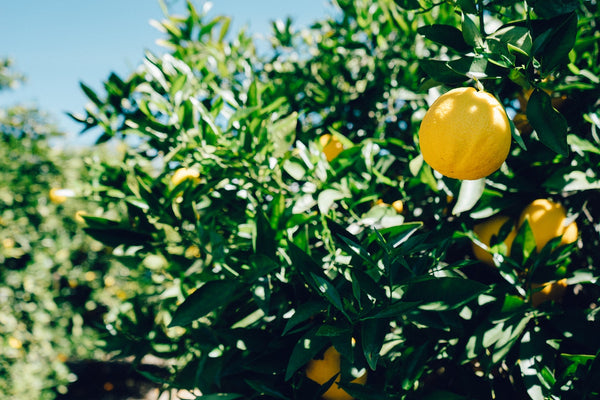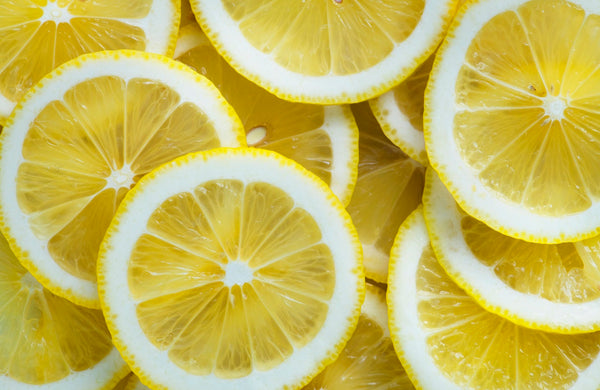When it comes to home-grown citrus trees, there's nothing like the Meyer Lemon. A cross between the tart lemon and the sweeter orange, Meyer Lemons are sweeter and juicier than their more common counterparts - making them sought-after in both grocery stores and home gardens alike.
The Meyer Lemon Tree is a fun tree that always seems to be blooming or fruiting. Many Meyer Lemon Trees are blooming now, bringing beautiful flowers and a wonderfully fresh citrus scent to homes. What’s a better way to prepare for spring cleaning than with an all-natural lemon scent?
The Secrets of Meyer Lemon Trees
Like with all citrus trees, Meyer Lemon blooms turn into fruit, so if you don’t have blooms, life won’t give you lemons. So, how exactly do you get these blooms? Make your tree comfortable. Under the proper care conditions, your citrus tree will have a ton of blossoms!
1. Light
Before fruiting, Meyer Lemon Trees need to see the light! They won’t flower without getting enough light. Make sure your trees get at least 6 hours of direct sunlight a day. You can do this by placing your tree by a large, sunny window. If you can, try to place your tree near an area that faces South. Southern-facing areas tend to get more light.

Also, if your tree is potted in a container and kept indoors, rotate it every three weeks. This way, the entire tree gets time in the sunshine!
2. Watering
Next, make sure that your trees get the right amount of water. Overwatering or under-watering your tree can harm fruit production. Let your Meyer Lemon dry out a little in between waterings, but it should never be completely dry - they'll grow best when the soil stays moist.
Check on your soil once a week. If it feels dry to the touch 2 inches below the surface, it’s time for more water. Slowly pour water into the pot and count to 20, or wait until you see water running out of the bottom of the pot.
Generally, Meyer Lemon Trees need water every one to two weeks. Leaves can be an indicator as to how your tree feels. If the leaves are drooping like they’re too heavy for the branches, the tree is getting too much water. If the leaves are crispy and dry or curl upwards, this is a sign of under-watering.
Don’t immediately overcorrect under-watering. Gradually add more water to your tree over time. If you immediately saturate the roots with a ton of water, your tree may become stressed.
3. Nutrients
Another way to keep your tree healthy and productive? Make sure that it gets all of its vitamin and minerals. When potting or planting your tree, it’s beneficial to mix in some citrus planting mix with your natural soil.
Also, to give your tree an extra boost, give it some fertilizer designed for citrus trees! Give your tree two tablespoons of fertilizer three to four times per year. Fertilize once in the early spring, once in early summer, then again in the late summer and in the fall. Space out your fertilizing by about four to six weeks.

4. Temperature
Meyer Lemon Trees are very cold hardy and can withstand temperatures down to about 20 degrees. If your area gets colder than that, your tree will need to be planted in a container and brought inside when the temperature drops.
But when they’re inside, winter heat can dry them out. Be careful not to place them under a vent. If your leaves start to dry, you can mist them daily with a spray bottle for extra humidity.
Once it warms up, don’t just stick your tree out in the hot sun for hours! It will need time to adjust to the heat. Move your tree outside for a few hours each day, gradually increasing the amount of time it spends outdoors, before letting it live outside all summer.
5. Pollination
Once the blooms open on your tree, they’ll need to be pollinated. Good thing that these trees are self-pollinating! However, having two or more trees will greatly increase the amount of pollinated blooms.
Meyer Lemon Trees can bloom all year, but they have two main blooming times: fall and early spring. If they bloom while it’s too cold for them to be outside, simply keep your tree indoors. However, when placed indoors, they won’t have the wind and bees to carry their pollen from bloom to bloom for them. You could release a few bees inside of your home to help with pollination, but we wouldn’t recommend it!
However, you can pollinate your indoor trees by hand. Simply take a small, dry paintbrush, and run it over each bloom as if you’re painting them. Do this once daily, and don’t wash the paintbrush until after the blooms have been pollinated.

6. Pruning
Another way to keep your Meyer Lemon Tree happy is by pruning it. Meyer Lemon Trees don’t have to be tall to produce fruit – just healthy. Keep them wide and branched out. When you decide to prune your trees in the early fall or early spring, look for branches that are growing straight upwards. Generally, these aren’t fruit-producing branches. Also, remove any damaged or crossing branches. Make your cuts at 45-degree angles facing upwards to promote new growth.
Also, look for areas that block the sunlight from the center of the tree. Removing these branches will increase air circulation and the amount of sunlight that hits these branches, which will decrease your tree’s risk of mold and fungi.
Be sure to look at the number of lemons you have growing. In order to prevent fruit overbearing, when your tree starts to fruit, you’ll want to remove a few lemons in large clusters when they’re pea sized. This will promote the growth of larger lemons when they reach maturity.
7. Patience is a Virtue
Your Meyer Lemon Tree will need time to get adjusted to its new environment before it starts producing fruit. Once your lemons start to grow, give them time to mature. They can take around six months to mature. Don’t harvest them until their skin changes from green to dark yellow. When your sweet Meyer Lemons are ready, their skin will be a shade of yellow that’s similar to the color of an egg yolk.





